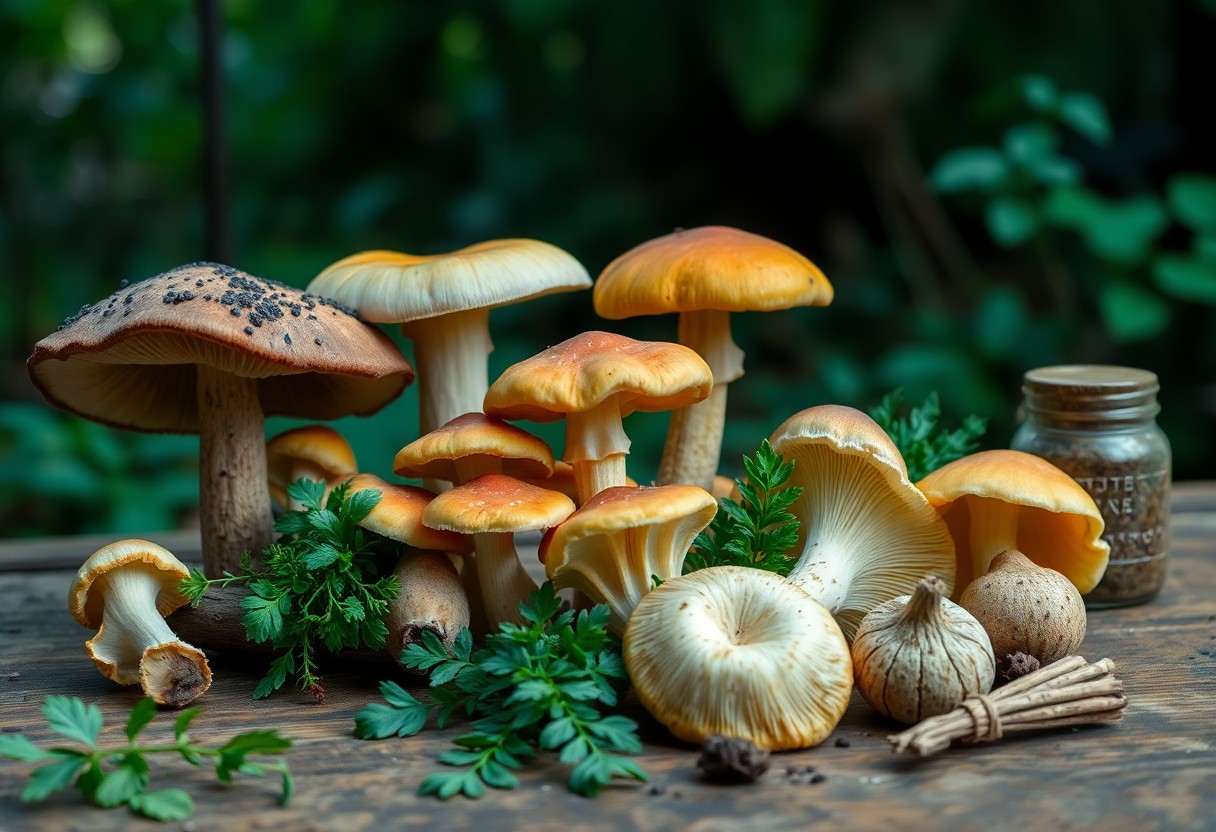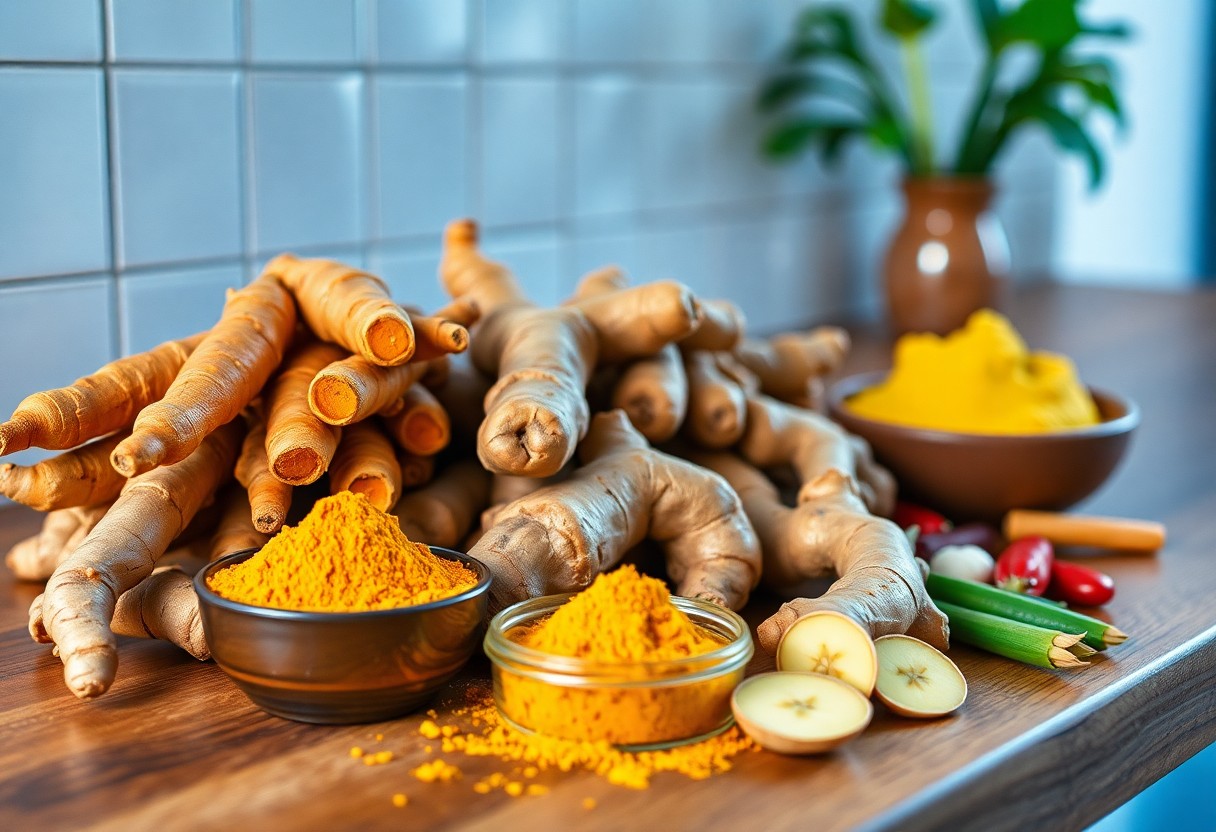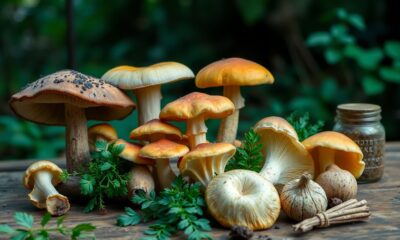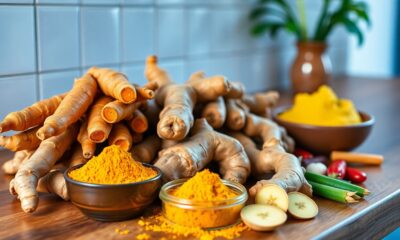Health & Society
Life and Drugs, Part 1, An Overview

Drugs // “It is better and more useful to meet a problem in time than to seek a remedy after the damage is done” explains a Latin saying of the mid-13th Century. According to the Council of the European Union (Review August 2022):
Drugs are a complex social and health phenomenon that affects millions of people in the EU. Illicit drugs can have tremendous negative consequences, not only for the people who use the drugs but also for their families and communities. The use of drugs generates enormous costs for and harm to public health and safety, the environment and labour productivcity. It also poses security threats linked to violence, crime and corruption.
Drugs and history
Curiously, the history of drugs is linked to the existence of life on Earth, which appeared some 3.5 billion years ago, first aquatic and then on the surface. In parallel with the development of life, a fundamental problem arises: how to survive and be part of the food chain while ensuring the survival of the species.
Living organisms have therefore developed means of defence: the constitutive ones such as claws, horns, spines, etc. and the so-called inducible ones which are at the origin of the synthesis of toxic substances in the form of secondary metabolites not necessary for the life of the organism but necessary for its survival against predators. And the human being is one of these formidable predators! So there is a close relationship between survival and existing toxins or drugs.
At the origin of the times, human health was in the world of spirits, magical practices and beliefs. Traditional healing systems are back to prehistoric times and the curing traditions already included the use of psychoactive plants. In Europe, it was in Ancient Greece, in the 5th century BC, that Hippocrates laid the foundations of rational medicine and medical ethics. His oath was taken up at the world level by the World Medical Association, created in 1947, then in the Geneva Declaration of 1948 (revised in 2020) and also by pharmacists/apothecaries and dentists.
A distinction must be made between drugs and medications. The main difference lies in the purpose of use or consumption:
-The medicine has a dosage, a curative purpose, a precise and repetitive action. But the medicine is not always without toxicity. Paracelsus (1493-1541) a Swiss doctor, philosopher and theologian even said:
“Everything is poison and nothing is without poison; the dose alone makes a thing not a poison”.
-A drug is any substance, natural or synthetic, which has a modifying effect on the state of consciousness, mental activity and behavior, likely to cause addiction. Some medicines could correspond to this definition but the drug is consumed without a medical prescription and its current use does not have a curative goal. It could be to experience new or pleasant sensations, to escape from reality, anxiety, relationship problems, past traumas, by conformity or rebellion, to be efficient or withstand pressure. But, whatever the reasons and patterns, drug use is not without risk with uncontrolled consequences…
Drugs and Humanity
The history of drugs also merges with the history of humanity as for:
a) the Hemp (cannabis) that was known in Asia since the Neolithic, around 9000 BC. The seeds were used in Egypt for their anti-inflammatory properties, and in China for their nutritive richness and in 2737 BC hemp is included in the Treaty of the medical herbs of the emperor Shen Nong; the hemp canes appear in Europe imported by the Romans and with the various invasions coming from Asia. It was also the “sacred herb” of the shamans’ rituals and part of the medical practices of the monks of the 12th century.
b) the Coca leaves, from the plant Erythroxylum coca, were used since 3000 years BC in the Andes. For the Incas, this plant had been created by the Sun God to quench thirst, cut hunger and make you forget the fatigue. It was also used during religious ceremonies as in Peru and Bolivia. The West discovered the coca use and properties in the 16th century with the Spanish “conquistadores” of Pizarro (1531), missionaries and settlers. Coca leaves were then used to enslave and send the Indians to work in the silver, gold, copper and tin mines. In 1860, German chemist Albert Niemann isolated the active anesthetic substance in the coca leaves. In 1863, Corsican chemist Angelo Mariani launched the famous French tonic wine “Vin Mariani” made with Bordeaux wine and coca leaf extracts. Meanwhile, in 1886, John Stith Pemberton (1831-1888), a pharmacist from Atlanta (USA), wounded at war and using cocaine, inspired by Mariani wine produced a stimulating drink made from coca, kola nuts and soda. Then the businessman Asa Griggs Candler (1851-1929) bought the formula and in 1892 created The Coca-Cola Company. In 1902 caffeine replaced cocaine in Coca-cola.
Cocaine is a powerful stimulant of the central nervous system. After the “high” wears off (15-30 min), the person may feel anxious, depressed, with an intense need to use cocaine again. Cocaine is one of the most difficult drugs to withdraw from.
It was in the 1960s, popularized by music and the media, that drugs became symbols of youthful rebellion, social upheaval and began to invade all aspects of society. In many ways, this was the pharmaceutical decade of the century with a plethora of new substances -and drugs- available.
Drugs classified
If we make a foray into the world of drugs, we can classify them according to their effects, such as:
- Dissociatives: Nitrous oxide (N2O, the laughing gas) is used as an anesthetic and analgesic in surgery and dentistry.And currently used for whipped cream siphons. It is very appreciated by young people during parties for the euphoric effect but it can cause severe neurological, hematological and cardiac disorders. It destroys vitamin B12. It also includes the Ketamine, PCP (angel dust), GBL (a sedative) and GHB (a solvent), etc.
- Delusional and entactogenic (desire for contact, empathy): Scopolamine, Atropine, etc.
- Depressants: alcohol, barbiturates (Amytal, Pentobarbital), opium, codeine,…
- Cannabinoids (cannabis, hashish): Delta9-THC, CBD, CBN, etc.
- Benzodiazepines: Alprazolam (Xanax), Valium, Rohypnol, …
- Psychiatric drugs: Fluoxetine (Prozac), Haloperidol (Haldol), Zoloft, Paroxetine (Paxil), etc.
- Natural stimulants: cocaine, caffeine, theophylline, cocoa theobromine, etc.;
- Stimulants: amphetamines, crystal meth, methamphetamine (WWII Pervitine), etc.
- Pharmaceutical stimulants: Adrafinil, Modafinil, Bupropion, etc.
- Psychedelic stimulants (hallucinogens): LSD, MDMA (ecstasy), Psilocybin, Bufotenin (alkaloid secreted by the skin of the toad that amateurs lick) and Ibogaine (from the Central African Iboga plant) are both from the family of tryptamines deriving from neurotransmitter serotonin.
Should also be mentioned The New Psychoactive Substances (NPS) which imitate traditional psychoactive substances -cannabis, cathinone (from the khat leaves), opium, cocaine, LSD or MDMA (amphetamine). But, they are more powerful and more addictive. More than 900 synthetic drugs have already been identified in Europe, uncontrolled, and illicit but sold on the Internet, and classified. (more in EMCD Drug profiles).
Examples of NPS:
1) Synthetic cannabinoids, are found in the: Spice, Yucatan, etc. as JWH-18 & 250, HU-210, CP 47 & 497, etc., having affinity for the CB1 receptors.
2) Synthetic derivatives of cathinone (an alkaloid extracted from the khat leaf, sympathicomimetic): 3-MMC (3-methylmethcathinone) and the 4-MMC (Mephedrone) which creates euphoria, blue-knee syndrome, risk of heart attack, etc.
- MDPV (methylenedioxypyrovalerone), from “bath-salts”.
- Overdose leads to hyperthermia, coronary heart disease, arrhythmia, episodes of psychosis and violent behavior.
3) A synthetic psychoactive opioid product: fentanyl, 100 times more powerful than morphine and more addictive, with unpredictable effects. It is considered the most lethal drug by overdose.
4) Krokodil, a Russian “flesh-eating” drug. Based on desomorphine synthesized in Germany in 1922 from morphine/codeine, a powerful sedative and analgesic that has since been abandoned. Solvents, gasoline, HCl, etc. are added to produce the drug with irreversible necrosis.
2022 European report on drugs

The European Drug Report 2022 of the EMCDDA (European Monitoring Center for Drugs and Drug Addiction), noted that Europe had 83.4 million people aged 15-64 using drugs, 29% of the population. This represents:
- 22.2 million for cannabis, the most consumed drug (7% of Europeans), of which 16 million were aged 15 to 34;
- 3.5 million for cocaine, including 2.2 million aged 15-34;
- Ecstasy or MDMA concerns 2.6 million people;
- 2 million for amphetamines, mostly aged 15-34;
- 1 million for heroin and other opioids, with 514,000 receiving substitution treatments.
The biggest cannabis smokers are young people in the Czech Republic with 23% of aged 15-34, followed by France (22%) and Italy (21%). The Netherlands and Belgium with 110 tons of cocaine seized in the port of Antwerp in 2021, are currently the drug hubs in Europe.
EMCDDA reports that in 25 European countries, 80,000 people are in treatment for cannabis use, representing 45% of all drug treatment entrants in 2020.
The increased availability of a wider variety of illicit drugs including NPS has led to different poly-drug use practices which complicate the clinical picture. The number of illicit drug overdose deaths in the EU is estimated to be in 2019 a minimum of 5,150 and 5,800 including Norway and Turkey. The age group most affected is 35-39 with double the number of deaths of the general average.
*In the State of Washington (USA), a study of 2021 shows that deaths by suicide increased by 17.9% among 15-24-year-olds after the legalization of cannabis.
To protect the physical and moral health of humanity and based on the Conventions of 1925 and 1931, three international Conventions on Drug Control of the United Nations Office on Drugs and Crime (UNODC) were signed. These are the 1961, 1971 and 1988 Conventions against the illicit traffic of narcotic drugs and psychotropic substances.
Children, drugs and decriminalisation
In 1989, the Convention on the Rights of the Child was also ratified. Its Article 33, too often forgotten by governments, stipulates that:
States Parties shall take all appropriate measures, including legislative, administrative, social and educational measures, to protect children from the illicit use of narcotic drugs and psychotropic substances as defined in the relevant international treaties.
In Europe, several countries have decriminalized cannabis use. This is particularly the case in Spain, Portugal, Italy and the Netherlands, where consumers are not liable to fines or imprisonment if for personal use.
Only Malta has fully legalized the recreational use of cannabis following a law passed in December 2021 that allows not only consumption but also cultivation.
In Germany, the Minister of Health intends to follow this pattern and legalize the recreational use of cannabis by 2024. His purpose by decriminalising cannabis is to ensure better protection for children and young people and also to provide better health protection!
France considers that the decriminalization/legalization results are still not conclusive and that the legalization of cannabis has led to a trivialization of the product, without reducing drug trafficking, and without preventing dealers from continuing to sell other illicit products.
In the Czech Republic, the Report 2022 on Illicit Drugs mentioned that
“the topics of political, professional and public discussions included cannabis used for both medical and non-medical purposes, the inadequacy of penalties for cannabis-related offences and the use of psychedelics for treatment of mental disorders and for self-development” .
In Hungary cannabis is illegal but a“ personal quantity“ (1 gram) is tolerated.
The above justifies the successive EU Drugs Strategies as 2021-2025 of the Council of the European Union aimed ” to protect and improve the well-being of society and of the individual, to protect and promote public health, to offer a high level of security and well-being for the general public and to increase health literacy” and in its point 5: Prevent drug use and raise awareness of the adverse effects of drugs.
Drugs, celebrities and education
Since the 1960-70ies, starting with the Beat Generation, and then with celebrities (many having subsequently faced an unexpected tragic destiny), young people with a lack of factual data and information on the drug subject, became easy and vulnerable targets. Currently, the youth are exposed to drugs earlier than ever due to the easy availability of drugs, the aggressive promotions in the media and on the Internet, and due to the constant innovations in the digital illicit drug market.
It is crystal clear when talking with youth and even with parents that they are eager to know more about the drug’s harmful effects to be able to have facts to make the right decision and for the parents to dialogue efficiently with their children. So, facing the drug problem, the master word is Education! Indeed:
Education is a progressive discovery of our own ignorance wrote the philosopher Will Durant (1885-1981). This is the best prevention and basic action to oppose the pressure and lobbying of the drug industry.
The single most destructive element present in our current culture is drugs said the humanist L. Ron Hubbard (1911-1986). In Europe, cannabis (marijuana) is with alcohol the most used drugs by 15,5% of the 15-34 years old. And cannabis appears to be the entrance gate into the destructive universe of drugs.
This is why the actions of the Foundation for a Drug-Free Europe and its hundred of Say No To Drugs associations and groups of volunteers across Europe, aware that every year drugs destroy thousands of lives and hopes, are actively contributing through The Truth About Drugs campaign, to preventively educate the youth and the public at large with factual data on the harming effects of drug use.
More in:
https://www.emcdda.europa.eu/publications/edr/trends-developments/2022_en
https://www.europol.europa.eu/publications-events/publications/eu-drug-markets-report
https://www.unodc.org/unodc/data-and-analysis/world-drug-report-2022.html
Get informed on drugs on: www.drugfreeworld.org or www.fdfe.eu
Discover soon in The European Times, the next part of this article: Life and Drugs: (2) The Cannabis.
Health & Society
Danish Youth Take Charge: A Drug-Free Future, One Shop at a Time

KINGNEWSWIRE – Press release // In the heart of Copenhagen, a group of 15 young activists—aged 10 to 20—are rewriting the narrative on youth empowerment and community health. Inspired by the principles of the Convention on the Rights of the Child and their faith in the Church of Scientology, these teens are spearheading a grassroots campaign to create a drug-free environment. Armed with educational booklets from The Truth About Drugs initiative, they’re turning local businesses into hubs of prevention, proving that age is no barrier to driving societal change.
From Booklets to Action: A Youth-Led Movement
Having started over a month, the group visits shops across Copenhagen, gaining the support of owners and shop assistants to display drug prevention materials at checkout counters. Their approach is simple but impactful: make critical information accessible to everyday customers, sparking conversations about the dangers of substance abuse. “They’re not just kids handing out flyers,” says Giulia, who guides them in this endeavor. “They are showing adults that they care about our future—and that they are taking responsibility for it.”
Their efforts align with global frameworks like the UN Convention on the Rights of the Child, which emphasizes youth participation in decisions affecting their lives. By engaging directly with businesses, the group embodies the spirit of some of UNICEF’s programs, which empowers young people to design solutions for community challenges. “These teens are bridging gaps between generations, ensuring their message resonates where it matters most” said Giulia, in charge of public affairs at the Church of Scientology in Denmark.
Tackling a Local Crisis with Global Lessons

Denmark has long grappled with youth drug use, particularly in areas like Copenhagen’s Freetown Christiania, where hash consumption reportedly remains prevalent. The group’s campaign addresses this head-on, mirroring strategies from what is done in other countries, and try to instil this to every other European country, combining education with community outreach to combat addiction before it arrives.
Their work also reflects a vision of supporting recovery and prevention, proving that empowerment starts long before crisis intervention. The program, one of the world’s largest non-state drug prevention initiatives, is fully funded by members of the Church of Scientology, inspired by L. Ron Hubbard’s research on drug prevention and rehabilitation. However, the teens emphasize the universal message of their materials: facts about drug risks, peer pressure, and making healthy choices “Our religion teaches us to serve others, and do it with factual information” says one of the participants, “this is about saving lives, not religious beliefs.”
A Model for Youth Agency Worldwide
The group’s initiative resonates with many international programs, by equipping young people to drive social change. By partnering with local businesses, this recently started Truth About Drugs youth group, is fostering a culture of collective responsibility. Their actions also echo WHO’s call for youth engagement in health advocacy, positioning them as allies in Denmark’s public health goals.
As these teens inspire shop owners and customers alike, they’re proving that meaningful youth participation isn’t a fairy tale. It’s a blueprint for building resilient communities—one booklet and one conversation at a time. “They are not waiting for permission to change the world,” says Ivan Arjona, Scientology’s representative to the European Union and the UN “They are already doing it.”
Health & Society
The Magic of Mushrooms – Exploring Their Nutritional and Healing Powers

Many people are fascinated by the world of mushrooms, captivated by their remarkable nutritional benefits and therapeutic properties. He, she, and they often overlook the fact that some species can be highly toxic, while others have the potential to boost immunity and act as natural remedies. By delving into the myriad varieties and their unique qualities, individuals can uncover how mushrooms not only enhance culinary experiences but also promote overall health and well-being. This exploration highlights both the magic and mystery of these fungal wonders.
Key Takeaways:
- Mushrooms are rich in imperative nutrients, including vitamins, minerals, and antioxidants that support overall health and well-being.
- Certain varieties of mushrooms have been linked to immune system support, potentially enhancing the body’s ability to fight infections and diseases.
- Some mushrooms, such as reishi and lion’s mane, are known for their adaptogenic properties, helping the body adapt to stress and improve mental clarity.
- Incorporating mushrooms into a balanced diet can contribute to a variety of health benefits, such as improved digestion and heart health.
- Research is ongoing into the potential therapeutic effects of mushrooms, with some studies suggesting benefits for mental health, including anxiety and depression management.
Nutritional Benefits of Mushrooms
While many people overlook mushrooms as a mere side dish, their nutritional benefits are remarkable. They serve as a low-calorie source rich in necessary nutrients, providing a variety of dietary fibers, proteins, and carbohydrates. Additionally, mushrooms are known to support immune function and may improve overall health by contributing to balanced nutrition. As he or she incorporates mushrooms into their diet, they may find a plethora of health benefits waiting to be discovered.
Essential Vitamins and Minerals
Benefits of mushrooms include their high content of necessary vitamins and minerals, which plays a significant role in overall health. They are sources of Vitamin D, potassium, selenium, and B vitamins, all of which contribute to various bodily functions such as immune support and energy production. Including mushrooms in diet may help individuals meet their nutritional needs without excessive calorie intake.
Antioxidant Properties
Vitamins within mushrooms not only nourish the body but also play a significant role in combating oxidative stress. Antioxidant properties found in mushrooms help mitigate damage caused by free radicals, which can lead to chronic illnesses and accelerated aging. The presence of ergothioneine and glutathione in various mushroom species further enhances their ability to protect cells from oxidative damage. Emphasizing the importance of these antioxidants, individuals can see how incorporating mushrooms into their meals promotes better health and longevity.
The unique combination of antioxidants in mushrooms, particularly ergothioneine, provides significant protection against oxidative stress and inflammation. Studies have shown that they can neutralize harmful free radicals, promoting cellular health and reducing the risk of chronic diseases such as heart disease and cancer. By regularly consuming mushrooms, he or she can harness these protective effects, making a positive impact on their well-being. Thus, mushrooms stand out as a powerful ally in the pursuit of optimal health.
Healing Powers of Medicinal Mushrooms
Clearly, the world of medicinal mushrooms offers profound benefits for holistic health. These fungi, rich in bioactive compounds, have gained attention for their potential in supporting healing processes within the body. From boosting immunity to combating inflammation, medicinal mushrooms serve as nature’s remarkable remedy, appealing to those seeking natural alternatives to traditional medicine.
Immune System Support
On their journey towards improved health, many individuals turn to medicinal mushrooms for their ability to enhance immune system function. Varieties like reishi and shiitake contain polysaccharides, which are known to stimulate immune response, helping the body defend against infections and diseases effectively. Their adaptogenic qualities further assist the body in managing stress, which can negatively impact immune health.
Anti-Inflammatory Effects
Systematic inflammation can lead to a variety of health issues, and medicinal mushrooms provide a natural solution. They are rich in compounds that exhibit anti-inflammatory properties, which can significantly reduce inflammation throughout the body. Studies have suggested that mushrooms like cordyceps and turkey tail help modulate inflammatory responses, potentially alleviating symptoms related to chronic conditions such as arthritis and other inflammatory diseases.
Anti-inflammatory properties in these mushrooms arise from their active compounds, including triterpenes and beta-glucans. These components effectively inhibit pro-inflammatory cytokines, reducing swelling and discomfort. By including medicinal mushrooms in their diets, individuals may experience enhanced recovery from inflammation-driven health issues, showcasing their potential role as a complementary approach in managing inflammatory conditions. They can significantly contribute to overall wellness and resilience, allowing individuals to maintain a healthier lifestyle.
Types of Mushrooms and Their Uses
Now, understanding the different types of mushrooms and their uses can enhance culinary and medicinal practices. Each mushroom type offers unique flavors and health benefits:
| Type | Uses |
| Button Mushroom | Culinary, rich in nutrients |
| Shiitake | Dietary supplement, immunity booster |
| Reishi | Stress relief, traditional medicine |
| Oyster Mushroom | Culinary, good source of protein |
| Chaga | Antioxidant, anti-inflammatory |
This understanding is key to unlocking the extensive benefits of mushrooms in daily life.
Culinary Mushrooms
Mushrooms offer a variety of flavors and textures that elevate countless dishes. Popular options like cremini and portobello are often used in gourmet cooking, while others like shiitake and oyster provide distinctive tastes that enhance soups, stir-fries, and sauces. Their versatility and nutritional value make them important ingredients in both vegetarian and meaty cuisines.
Medicinal Mushrooms
Medicinal mushrooms provide numerous health benefits that can support wellness. Some prominent types include turkey tail, known for its immune-boosting properties, and chaga, celebrated for its antioxidant effects. With a rising interest in natural remedies, these mushrooms have gained popularity for their immune, cognitive, and anti-inflammatory benefits.
At the forefront of natural healing, she highlights that while many medicinal mushrooms offer tremendous advantages, he cautions against some varieties that can be toxic. For instance, the Amanita muscaria mushroom can lead to severe health complications, underscoring the importance of proper identification. On the positive side, mushrooms like Lion’s Mane are celebrated for enhancing cognitive function and reducing anxiety. They serve as potent tools for those seeking holistic health solutions.
Incorporating Mushrooms into Your Diet
Once again, incorporating mushrooms into one’s diet can enhance overall health while adding unique flavors to a variety of meals. He or she can sauté them, add them to salads, or use them as a meat substitute in various recipes, tapping into their rich nutritional profile. Whether fresh, dried, or powdered, they can be effortlessly blended into everyday dishes. Consider making a habit of including these versatile fungi to reap their numerous benefits for heart health and immunity.
Culinary Tips and Recipes
Between experimenting with different types of mushrooms, such as portobello or shiitake, he or she can discover their diverse culinary applications. Here are some quick tips:
- Use fresh mushrooms in pasta dishes for added texture.
- Incorporate dried mushrooms into soups for depth of flavor.
- Try mushroom powders as a seasoning for a savory kick.
- Consider stuffed mushrooms as a delicious appetizer.
After exploring various recipes, they will find endless possibilities to enjoy mushrooms while benefiting from their health advantages.
Supplements and Extracts
Across the world, mushroom supplements and extracts are gaining popularity for their potential health benefits. He or she may consider using these offerings, such as reishi, lion’s mane, or cordyceps, which are linked to improved cognitive function, stamina, and immune support. Importantly, they should consult a healthcare professional before incorporating these into their regimen to avoid potential interactions with medications or existing health conditions, ensuring a safe and effective experience.
This exploration of mushroom supplements reveals that while many find them beneficial for enhancing overall wellness, one must also be aware of the possible side effects they could encounter. As with any supplement, it is vital to choose high-quality products from reputable sources. Caution is warranted since some mushrooms can also be toxic, leading to serious health risks if not properly identified or harvested. Ultimately, he or she should approach mushroom supplementation thoughtfully to embrace the positive effects while being mindful of safety.
Safety and Precautions
After understanding the benefits of mushrooms, it’s vital for individuals to prioritize safety and precautions when incorporating them into their diet or wellness routines. Correct identification and knowledge of potential risks can prevent adverse effects, ensuring they enjoy the beneficial properties of these fungi without unnecessary harm.
Identifying Edible Mushrooms
Along their journey to explore mushrooms, individuals must become adept at identifying edible varieties. Familiarizing oneself with local species and consulting reputable field guides or experts can significantly reduce the risk of consuming toxic mushrooms. Proper identification is key to enjoying the nutritional and healing benefits mushrooms offer.
Potential Allergies and Interactions
Among the numerous benefits of mushrooms, individuals should be aware of potential allergies and interactions that could arise. These can vary from mild discomfort to severe reactions, depending on the person’s unique sensitivities.
Considering the diverse range of mushroom species, it is important for individuals to be vigilant about potential allergies and interactions. Some individuals may experience allergic reactions, which can manifest as gastrointestinal distress or skin irritations. Additionally, mushrooms can interact with certain medications, such as anticoagulants, increasing the risk of adverse effects. To safeguard health, consulting a healthcare professional before introducing new mushroom varieties into the diet is highly advisable, particularly for those with existing health conditions or medications.
Future Research and Discoveries
Unlike conventional foods, mushrooms hold vast potential waiting to be unlocked through further research. He and she recognize that ongoing studies may unearth new nutritional benefits and therapeutic applications, especially in treating conditions such as depression and anxiety. They also caution that while many mushrooms boast healing properties, others can be toxic or harmful. Continued exploration into the complex ecosystems of fungi may lead to groundbreaking discoveries in medicine, agriculture, and sustainability, cementing mushrooms as a vital focus for future research endeavors.
Summing up
The exploration of mushrooms reveals their remarkable nutritional and healing properties, showcasing their roles in enhancing immune function and promoting overall well-being. They provide imperative vitamins, minerals, and antioxidants that benefit health, while certain varieties exhibit potential medicinal qualities that have intrigued researchers. By incorporating mushrooms into their diets or utilizing them in various health remedies, individuals can harness the full spectrum of benefits these natural wonders offer. Thus, she, he, and they can appreciate the magic of mushrooms in fostering a healthier lifestyle.
FAQ
Q: What are the nutritional components of mushrooms?
A: Mushrooms are low in calories and fat while being a good source of important nutrients. They contain a variety of vitamins such as B vitamins (including riboflavin, niacin, and pantothenic acid), vitamin D, and antioxidants. Additionally, mushrooms are rich in minerals such as selenium, potassium, and copper. Their fiber content can also aid in digestion.
Q: How can mushrooms contribute to a healthy diet?
A: Incorporating mushrooms into your diet can enhance overall health due to their nutritional density. They can help improve heart health by lowering cholesterol levels and supporting blood pressure control. The antioxidants in mushrooms can protect the body from oxidative stress, and their fiber can promote digestive health. Plus, their savory flavor can enhance meals without adding excessive calories.
Q: What are some medicinal properties of certain mushroom species?
A: Various mushroom species are recognized for their potential health benefits. For example, reishi mushrooms are often associated with boosting the immune system, while lion’s mane has been studied for its effects on cognitive function and nerve health. Shiitake mushrooms may have cholesterol-lowering properties, and maitake mushrooms are believed to have potential anti-cancer effects. However, these effects are often based on preliminary research, and further studies are needed.
Q: Are there any risks associated with consuming mushrooms?
A: While many mushrooms are safe and nutritious, some can be toxic or cause allergic reactions. It’s important to only consume mushrooms that have been properly identified and sourced from reliable suppliers. Wild mushrooms should not be consumed unless you are trained to identify edible varieties, as some can be life-threatening. Additionally, individuals with specific allergies or sensitivities should approach mushroom consumption cautiously and consult a healthcare professional if needed.
Q: How can I incorporate more mushrooms into my meals?
A: There are numerous ways to add mushrooms to your diet. You can sauté them as a side dish, include them in soups and stews, or toss them in salads for added texture. Mushrooms can also be used as a meat substitute in dishes like burgers or tacos, and they work well in stir-fries and pasta dishes. Experimenting with different mushroom varieties can bring diverse flavors and textures to your meals.
Health & Society
Spice Up Your Life – The Health Benefits of Turmeric, Ginger, and More

With an increasing focus on natural remedies, he, she, and they are discovering the remarkable health benefits of spices like turmeric and ginger. These powerful ingredients not only add flavor to meals but also support overall well-being through their anti-inflammatory and antioxidant properties. Incorporating these spices into daily diets can lead to improved digestion and enhanced immune function. Furthermore, they may help reduce the risk of chronic diseases, making it necessary for health-conscious individuals to explore the potent benefits offered by these culinary treasures.
Key Takeaways:
- Turmeric contains curcumin, a powerful anti-inflammatory compound that may help reduce inflammation and support joint health.
- Ginger is known for its digestive benefits, including alleviating nausea and improving digestive efficiency.
- Both turmeric and ginger possess antioxidant properties, which can help combat oxidative stress in the body.
- Incorporating these spices into your diet may enhance overall immune function and promote better health.
- Experimenting with various recipes can make it easier to include turmeric, ginger, and other beneficial spices in daily meals.
The Power of Turmeric
As one of the most celebrated spices in traditional medicine, turmeric carries significant health benefits that can enhance overall well-being. Its vibrant yellow color and warm flavor make it a popular addition to various dishes, but especially its potential to improve health makes it a staple in many households. By including turmeric in their diet, individuals may experience its numerous therapeutic effects, transforming not only the flavor of meals but also potentially their health.
Curcumin: The Active Compound
About thirty percent of turmeric’s content is made up of curcumin, its primary bioactive compound. Curcumin is responsible for most of turmeric’s health-promoting properties, including its antioxidant and anti-inflammatory effects. This means that when someone incorporates turmeric into their diet, they are primarily benefiting from curcumin’s remarkable ability to support various bodily functions.
Anti-Inflammatory Properties
On the topic of inflammation, curcumin is known for its powerful anti-inflammatory properties, which may help in reducing chronic inflammation linked to many health issues. Studies reveal that curcumin inhibits several molecules involved in inflammation, explaining its competency in treating conditions like arthritis and other inflammatory diseases.
At the same time, they should be aware of the potential of curcumin to combat inflammation on a molecular level. Individuals suffering from chronic inflammation may find that incorporating turmeric into their diet can help alleviate symptoms and improve their health. Regular consumption may support immune function, reduce joint pain, and promote overall wellness, making it an imperative spice to consider for those looking to enhance their health naturally.
The Benefits of Ginger
If someone is looking to enhance their health naturally, ginger is a remarkable addition to their diet. This spicy root has been celebrated for centuries for its medicinal properties, offering a variety of health benefits that range from digestive support to powerful anti-inflammatory effects.
Digestive Health
Among the many advantages of ginger, its ability to promote digestive health stands out. This spice can help alleviate common gastrointestinal issues, such as bloating and indigestion, by encouraging efficient digestion and soothing the stomach lining.
Anti-Nausea Effects
Besides its digestive benefits, ginger is well-known for its anti-nausea effects, particularly in cases of motion sickness and morning sickness.
This natural remedy is often recommended to pregnant women and travelers alike. Research has shown that consuming ginger can significantly reduce nausea and vomiting, providing relief for those who experience these discomforts. Furthermore, it can be more effective than some over-the-counter medications, making it a safer alternative for many. Incorporating ginger into one’s diet through teas, capsules, or fresh root can help mitigate feelings of unease, offering a simple yet effective solution for those in need.
Other Healing Spices
All spices possess unique properties that contribute to overall health and wellness. Many of these ingredients not only enhance flavor but also offer an array of potential benefits. From anti-inflammatory effects to blood sugar regulation, incorporating various spices into daily diets can be an easy way for individuals to boost their health naturally.
Cinnamon and Blood Sugar Control
Above all, cinnamon has been known to play a significant role in managing blood sugar levels. Studies suggest that this aromatic spice can improve insulin sensitivity, making it a valuable ally for those struggling with diabetes or prediabetes. As many individuals seek natural ways to maintain their health, cinnamon offers a simple yet effective option.
Garlic and Heart Health
With its potent properties, garlic has earned a reputation for promoting heart health. This flavorful bulb is associated with lower blood pressure and reduced cholesterol levels, making it a powerful addition to any heart-friendly diet.
Indeed, garlic contains active compounds such as allicin, which contribute to its heart-protective effects. Studies indicate that regularly consuming garlic may help lower blood pressure and reduce LDL cholesterol levels, both of which are significant risk factors for heart disease. Moreover, garlic’s antioxidant properties can help protect the cardiovascular system from damage. By integrating garlic into their diets, individuals may lower their risk of heart-related conditions while enjoying its unique flavor and versatility.
Incorporating Spices into Your Diet
Unlike many common condiments, spices such as turmeric, ginger, and others can elevate meals not just in flavor, but also in health benefits. They can be added to a variety of dishes, including soups, stews, and smoothies, allowing for a seamless integration into one’s daily eating habits. Individuals seeking to enhance their culinary experience should consider not only the taste but also the nutritional advantages these spices offer.
Cooking Tips and Techniques
At home, incorporating spices into meals can be simplified with a few techniques.
- Start with a base of warmed oil to activate necessary oils in spices.
- Use freshly ground spices for more potent flavor and health benefits.
- Experiment with combining spices to create unique blends that suit personal taste.
This enhances the overall culinary experience.
Creative Recipes
Spices can transform simple recipes into gourmet creations. They can be included in everything from marinades to desserts, highlighting their versatility. They encourage cooks to experiment with diverse culinary traditions.
Due to their vibrant flavors, spices invite creativity in the kitchen, enabling individuals to craft dishes that not only taste great but also offer health benefits. For example, a ginger-infused smoothie can brighten up breakfast, while a turmeric curry can serve as a hearty dinner option. She may also explore spice blends, such as Garam Masala or Ras el Hanout, to achieve a global flair. Importantly, they should be mindful of the balance between flavors to promote a pleasant taste experience.
Potential Risks and Considerations
For those considering adding turmeric, ginger, or other spices to their diet, it’s imperative to be aware of potential risks and considerations. While these spices are generally safe for most people, some individuals may experience side effects or interactions, depending on their unique health conditions and medications. Consulting a healthcare professional before incorporating large amounts of these spices can help avoid any adverse effects.
Allergies and Sensitivities
Considerations around allergies and sensitivities are important when introducing new spices into one’s diet. Some individuals may have allergic reactions to turmeric, ginger, or other similar spices, leading to symptoms such as skin irritations or gastrointestinal issues. She should monitor her body’s response when trying these spices and seek medical advice if any adverse reactions occur.
Interactions with Medications
Around the topic of interactions with medications, it is advisable for individuals who take prescription or over-the-counter drugs to be cautious with turmeric and ginger. Turmeric, in particular, may enhance the effects of anticoagulants, increasing the risk of bleeding. Ginger can also affect certain medications, including blood thinners and antidiabetic drugs. It is imperative for individuals to consult their healthcare professional if they are on medications, ensuring that any spice additions do not lead to negative interactions.
It is vital for individuals to recognize that while spices like turmeric and ginger offer numerous health benefits, they can interfere with medication stability and efficacy. Specifically, patients on blood thinners or other medications affecting clotting may face heightened risks of bleeding when consuming turmeric. Additionally, those managing diabetes might notice altered blood sugar levels due to ginger’s potential effects on insulin. Therefore, a thorough discussion with a healthcare provider can provide guidance tailored to personal health needs, promoting both safety and effectiveness in dietary changes.
Summary of Health Benefits
Not only do turmeric and ginger offer vibrant flavors, but they also provide numerous health advantages. They contain anti-inflammatory properties that can alleviate chronic pain and improve joint health. Additionally, these spices are rich in antioxidants, promoting better immune function and reducing oxidative stress. Emerging studies suggest that they may even play a role in cancer prevention and heart health due to their ability to improve circulation and lower cholesterol levels. Incorporating turmeric and ginger into one’s diet can be a simple yet effective way for individuals to enhance their overall well-being.
To wrap up
Summing up, individuals seeking to enhance their well-being can greatly benefit from incorporating spices like turmeric and ginger into their diets. They possess powerful anti-inflammatory and antioxidant properties that can support immune function and overall health. By exploring the myriad ways these spices can be integrated into daily meals, they can not only enjoy a flavorful culinary experience but also support their body’s resilience and vitality. Thus, embracing these spices is a simple yet effective approach to fostering better health and wellness.
Q: What are the primary health benefits of turmeric?
A: Turmeric is known for its anti-inflammatory and antioxidant properties, primarily due to its active compound, curcumin. It may help reduce symptoms of arthritis, improve brain function, and lower the risk of heart disease. Many studies suggest that curcumin can also help boost the immune system and may support digestive health.
Q: How does ginger contribute to overall wellness?
A: Ginger is often used to alleviate nausea and is effective in reducing symptoms of motion sickness and morning sickness in pregnant women. In addition, it has anti-inflammatory properties and can aid digestion. Some studies suggest that ginger may also have potential benefits in managing blood sugar levels and reducing muscle pain after exercise.
Q: Are there any side effects associated with consuming turmeric and ginger?
A: While both turmeric and ginger are generally safe when consumed in moderation, they can cause side effects in some individuals. High doses of turmeric may lead to digestive issues, such as diarrhea or stomach upset. Ginger, when taken in large amounts, can also cause heartburn or diarrhea. It is always advisable to consult a healthcare professional if you have any concerns about adding these spices to your diet.
Q: Can turmeric and ginger enhance immune function?
A: Yes, both turmeric and ginger are known to support the immune system. Turmeric’s curcumin has been shown to enhance the body’s immune response while possessing antibacterial and antiviral properties. Ginger also boosts immunity through its antioxidant content and can help the body fight off infections, making these spices beneficial additions to a health-conscious diet.
Q: How can I incorporate turmeric and ginger into my daily meals?
A: There are various ways to add turmeric and ginger to your diet. You can use turmeric in cooking, such as in curries, soups, and rice dishes. Ginger can be grated into smoothies, added to teas, or used in stir-fried dishes. Both spices can also be found in supplement forms if fresh or powdered versions are not convenient for you. Experimenting with different recipes will help you find your preferred methods of consumption.
-

 EU & the World7 days ago
EU & the World7 days agoInnam Dustgir’s Approach to Public Relations
-

 Health & Society6 days ago
Health & Society6 days agoCold Showers and Beyond – Embracing Temperature Therapy for Vitality
-

 Politics7 days ago
Politics7 days agoEU pledges €3.4 billion to combat global malnutrition
-

 Health & Society5 days ago
Health & Society5 days agoNatural Sleep Solutions – Creating a Restorative Nighttime Routine
-

 Health & Society4 days ago
Health & Society4 days agoThe Art of Earthing – Grounding Yourself for Better Physical Health
-

 EU & the World5 days ago
EU & the World5 days agoYoung Scooter’s Kids: About the Late Rapper’s Daughter & Sons
-

 Politics6 days ago
Politics6 days agoEU supports the EU wine sector to cope with market uncertainties
-

 Sports7 days ago
Sports7 days agoOlimpia Milano still knocked out, Ettore Messina doesn’t mince words















